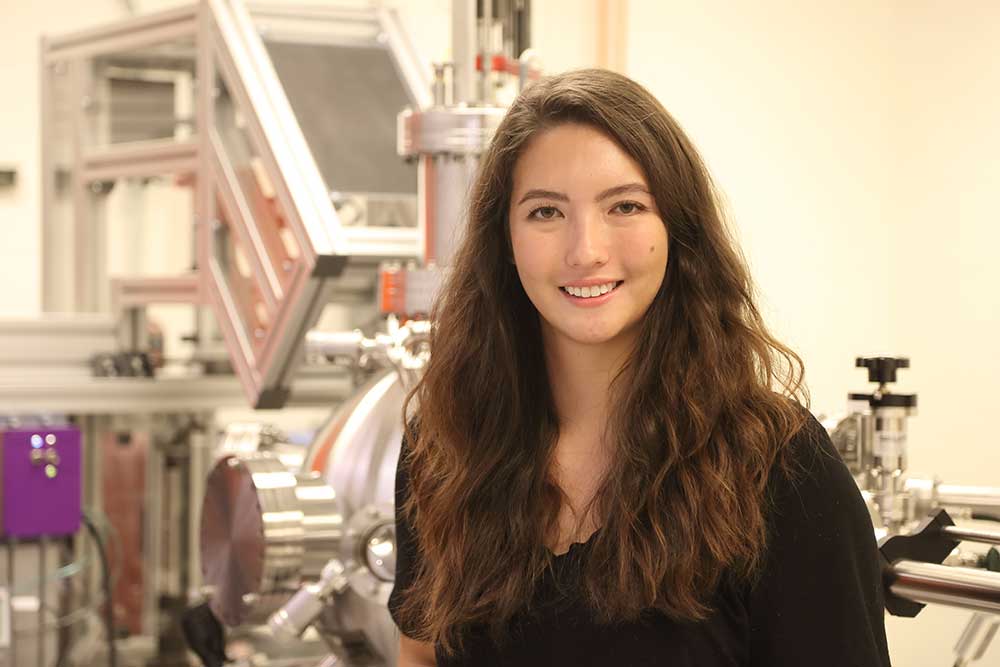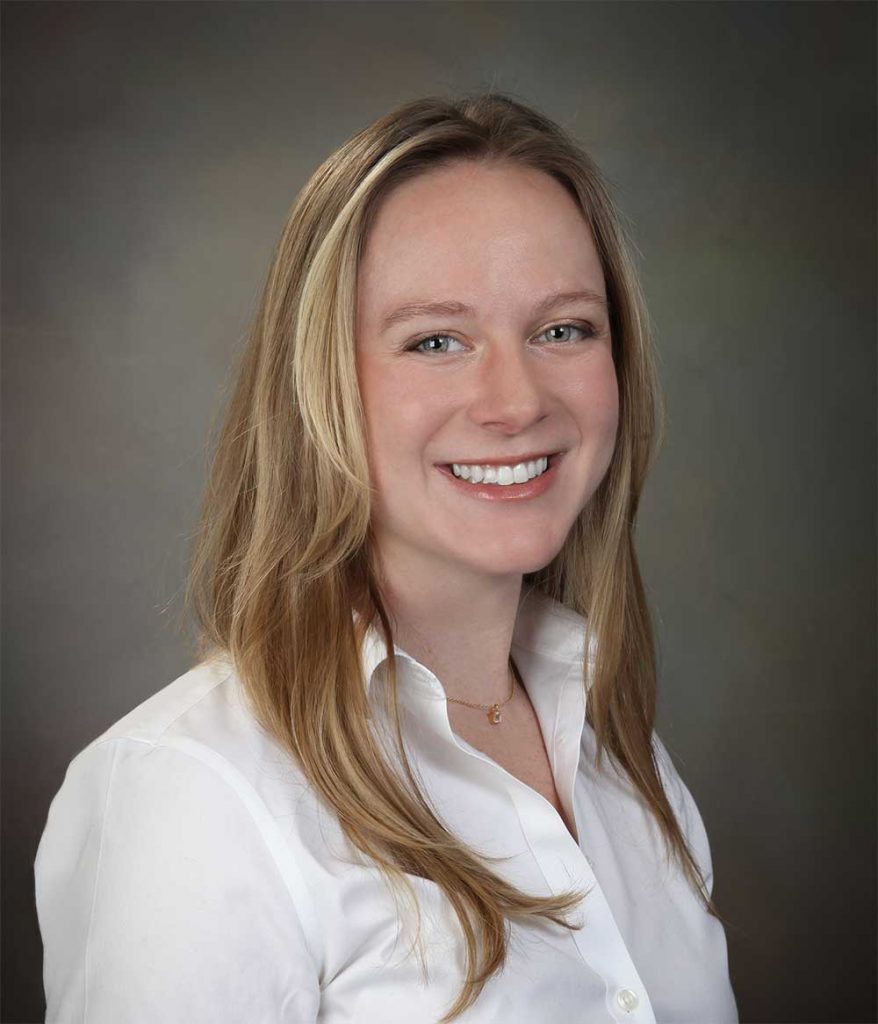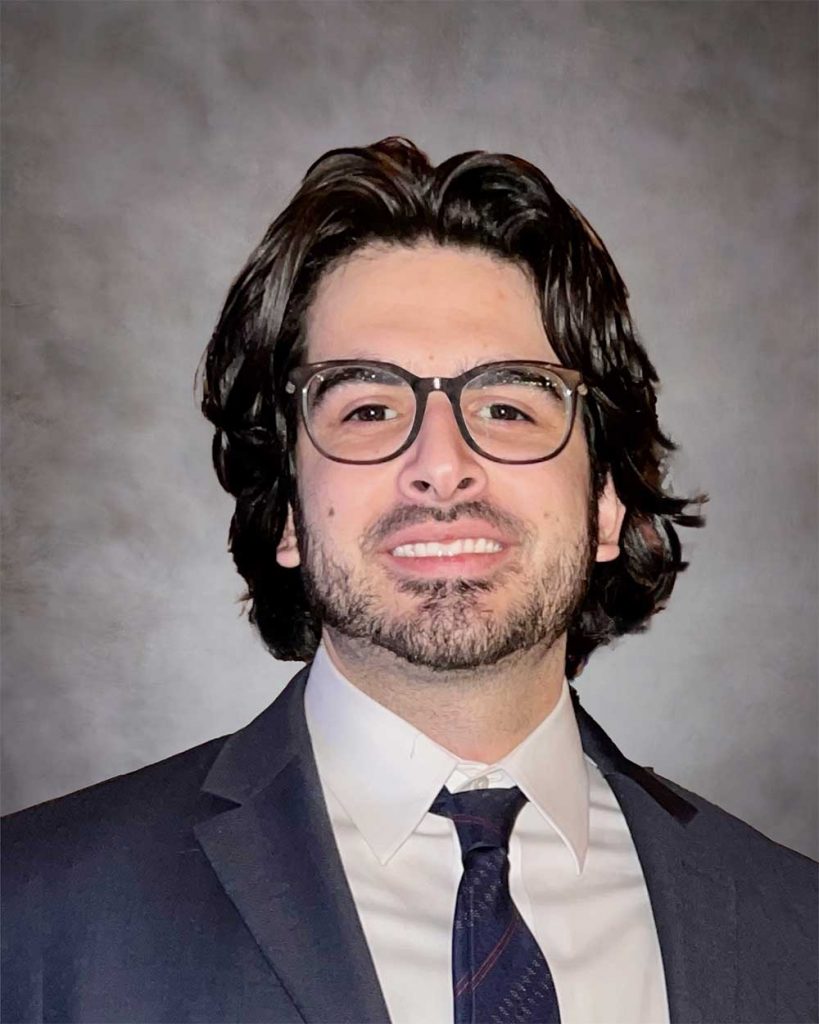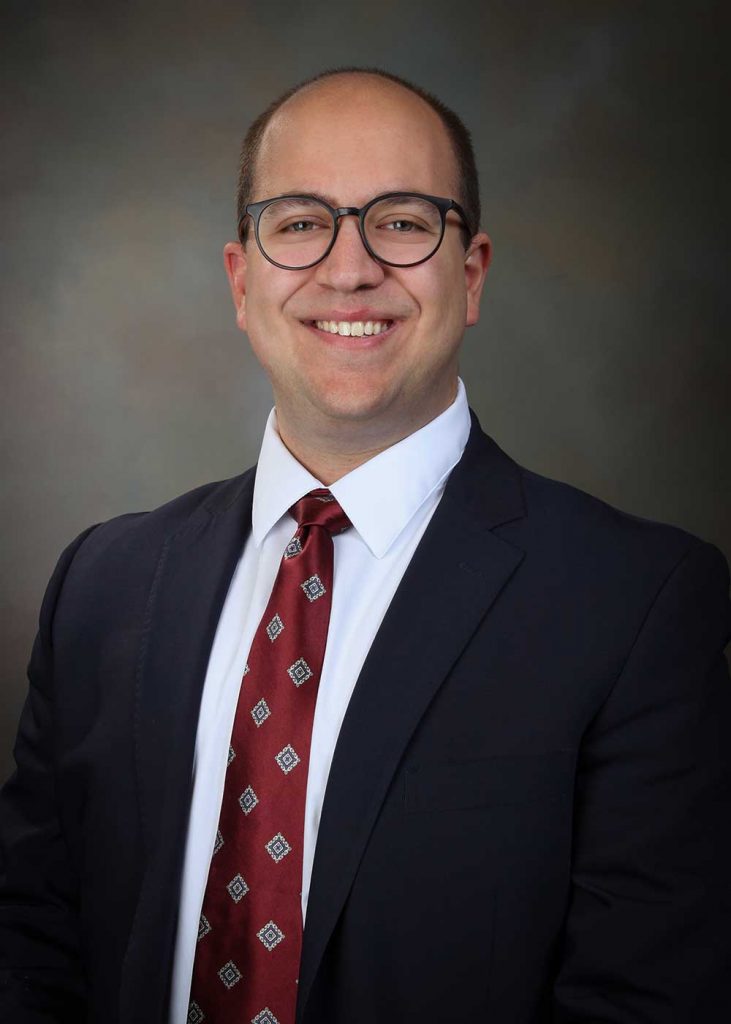Meet the 2024 Truman and Hruby fellows
Distinguished Level Fellowships are autonomous three-year appointments offered to individuals who want to further Sandia’s national security mission. Fellows are granted opportunities to delve deep into their research areas at state-of-the-art facilities and the ability to learn from recognized engineers and scientists.
The 2024 Hruby Fellows are Samantha Jaszewski and Hannah Stroud, and the 2024 Truman Fellows are Matthew Barry and Jonathan Paras.
Samantha Jaszewski: Harnessing ferroelectric materials in extreme environments

During her fellowship, Samantha Jaszewski is researching computer memory that is based on ferroelectric materials, specifically focusing on hafnium oxide.
Hafnium oxide is a material that is present in computer chips; in its ferroelectric form, it can be used as a memory material that can enable further miniaturization of computer components.
“The material increases the efficiencies and lowers the energy needed for computing, which is important because the energy needs from computing are constantly increasing,” Samantha said.
Hafnium oxide also has the potential to withstand harsh radiation environments, which is important for several national security applications.
“I’m interested in seeing how this material performs under those radiation conditions and to understand the fundamental limits of this material, which will set the application space that it can be used in,” Samantha said.
Samantha graduated from Boston College in 2017 with a bachelor’s degree in chemistry. In 2023, she completed her doctorate in materials science and engineering at the University of Virginia, where she authored her dissertation “Processing and Field Cycling Impacts on the Properties and Performance of Ferroelectric Hafnium Oxide Thin Films.”
Samantha’s adviser at the University of Virginia, Jon Ihlefeld, was a Sandian for nearly 10 years before entering academia. He inspired Samantha to apply for a fellowship at the Labs.
“I got to hear my adviser’s experience working at Sandia, and he had a lot of positive things to say about his time here. And, from early on, I was really interested in working at a national lab. So it was a perfect opportunity to learn what it was like to work at Sandia,” Samantha said.
Hannah Stroud: Enhancing reentry vehicle models with roughness features

Seeking the ability to choose her own research path and learn from the best and brightest, Hannah Stroud applied for the Jill Hruby Fellowship. Her experience as an intern gave her insight into the fellowship application process and the opportunities available at Sandia.
“Before beginning my internship, I didn’t know very much about Sandia at all. The internship process was helpful for understanding the type of work I could do as a postdoc, as well as for making connections with technical leaders who gave me a lot of guidance,” Hannah said.
Hannah earned bachelor’s, master’s and doctorate degrees in aerospace engineering from Texas A&M University. Her graduate research focused on aerospace structures and the ways they can change shape under loads. Hannah’s dissertation explored how forces from fluids like air and water can remove material from a structure, a topic which eventually connected her to scientists studying ablative thermal protection systems at Sandia.
When a vehicle reaches hypersonic speeds, the fast-moving air applies forces that result in friction, leading to extreme heating. To protect the vehicle and its contents, a sacrificial material can be burned off in a controlled way, taking heat away from the vehicle. This process changes the geometry of the vehicle, however, and often in non-uniform ways.
Hannah’s current work proposes methods for including aerodynamic effects of rough surface geometries produced during the ablation process in both fluid models and the ablation model itself. She and other scientists believe that understanding coupled effects are key to developing better hypersonic systems.
“I have a lot of support from people who are invested in the outcome of my work. I’m surrounded by a great team with so much knowledge and experience, and I’m so fortunate to learn everything I can from them,” said Hannah.
Matthew Barry: Multiscale materials modeling with machine learning

Matthew is spending his fellowship developing a machine-learning framework for multiscale modeling of atomic systems. This framework will enable development of reduced-order material structure-property relationships that can be used to speed up expensive physics simulations or even bypass them completely. Matthew plans to deploy this framework to design and discover novel multifunctional materials for next-generation national energy and defense missions.
“Part of this project is building on some of the tools I developed during my Ph.D. The team and I here at Sandia are working to improve and expand the capabilities of these tools and apply them to study specific materials,” Matthew said.
Matthew is no stranger to fellowships. Prior to joining Sandia, he was a fellow through the National Science Foundation: Integrative Graduate Education and Research Traineeship, as well as a NASA Space Technology Research Fellow.
“Being able to participate in fellowships prior to coming to Sandia has given me invaluable experience and the freedom to explore interesting research topics. I am excited to have the opportunity to continue exploring such interesting research and to apply that research to Sandia’s missions,” Matthew said.
Matthew received his master’s in mathematics from the Georgia Institute of Technology in 2022 and a doctorate in mechanical engineering from Georgia Tech in 2023.
Jonathan Paras: Revolutionizing metal manufacturing

Jonathan became fascinated with metals when he joined his high school robotics team.
“I remember working on these little robotic-type mechanisms and being more interested in the metal that we made the robots out of than the mechanical design of the machines themselves. Why could I bend the aluminum alloys with my hands? Why was steel so much heavier?” Jonathan said.
His curiosity about metal alloy properties inspired him to write his undergraduate college applications about wanting to study materials science, with a focus on the subfield of metallurgy.
Jonathan attended Massachusetts Institute of Technology, where he completed his bachelor’s and doctoral degrees in the department of materials science and engineering. His dissertation focused on the thermodynamic behavior of electrons around the melting point in pure metals and their alloys.
But he has bigger plans than focusing on pure scientific research.
“My goal is to work on conventional manufacturing. And, when I say conventional, I don’t mean boring or old, but the kind of work that used to occur at Sandia’s Melt-Lab,” Jonathan said.
Part of Jonathan’s research is to look at the fundamental thermodynamic behavior of metal alloys at high temperature to better predict how they respond under extreme conditions, which can emerge during certain manufacturing processes. Jonathan’s goal is to design new processes to manufacture metal alloys that Sandia previously could not.
The metallurgical research that took place during the Manhattan Project is what initially drew Jonathan to Sandia.
“When it was time to consider a postdoc position, I began reading about the history of nuclear deterrence work in the United States. I was interested in all the fathers of high-temperature metallurgical research, like Leo Brewer and Cyril Stanley-Smith, who worked on the Manhattan Project,” Jonathan said. “There was this interesting confluence of people who worked on aspects of the Manhattan Project that were either associated with nuclear programs or affiliated with Sandia.”
Jonathan is the grandson of immigrants hailing from the Pindus Mountains in Epirus, Greece. His grandfather, Christos G. Pappas, came through Ellis Island in 1951 and settled with his family in Philadelphia, where Jonathan grew up.
Sandia’s postdoctoral fellows are integral to the success of the Labs, as they bring fresh and innovative perspectives to critical mission areas and new approaches to projects. These four accomplished individuals contribute to Sandia’s mission by promoting scientific excellence and sustaining a thriving research environment.